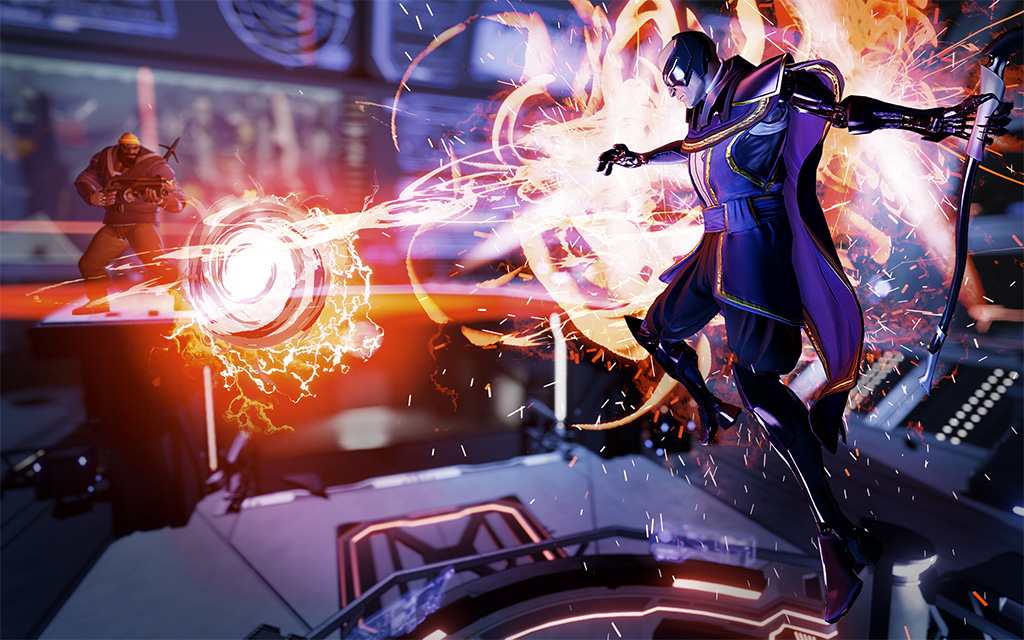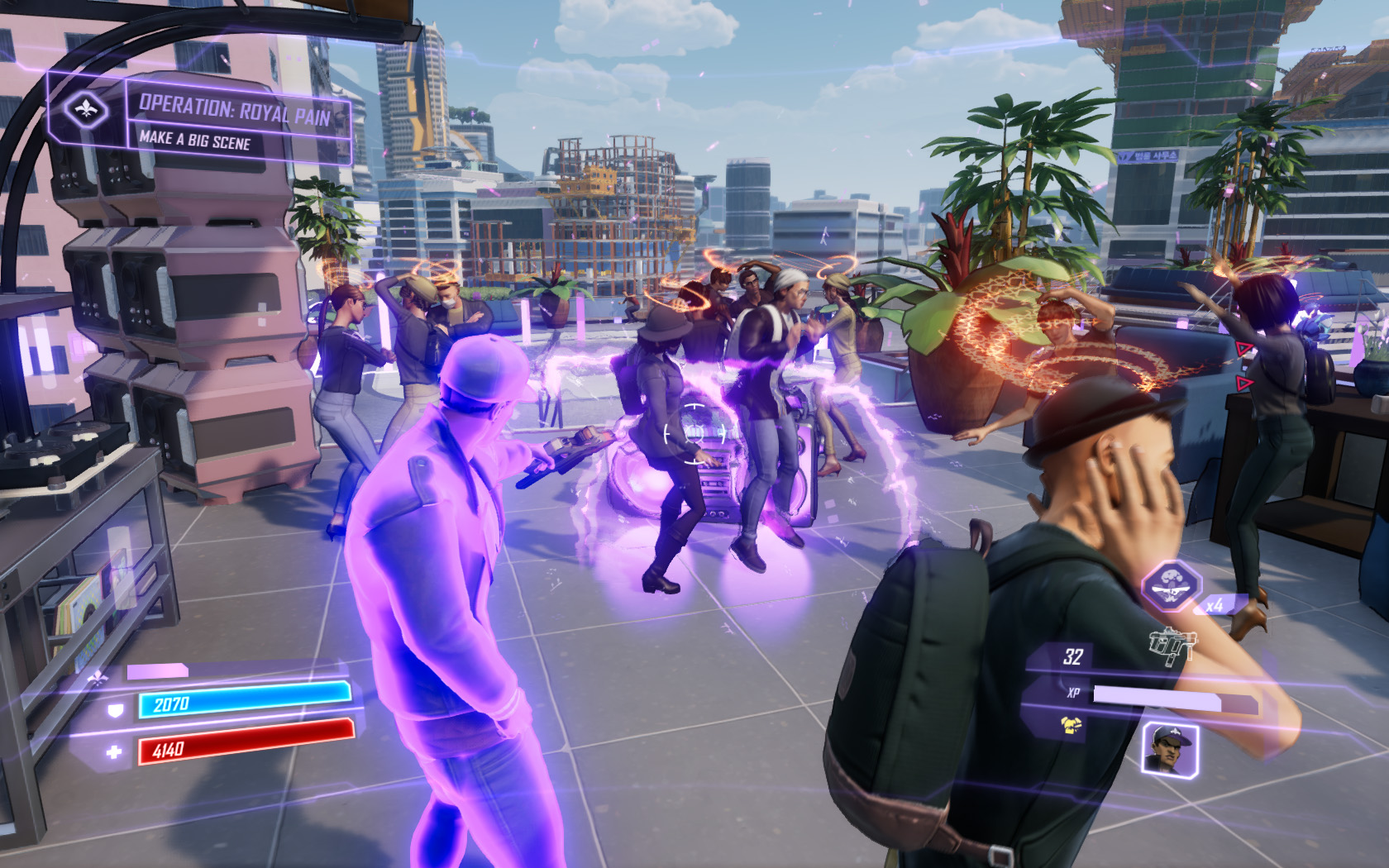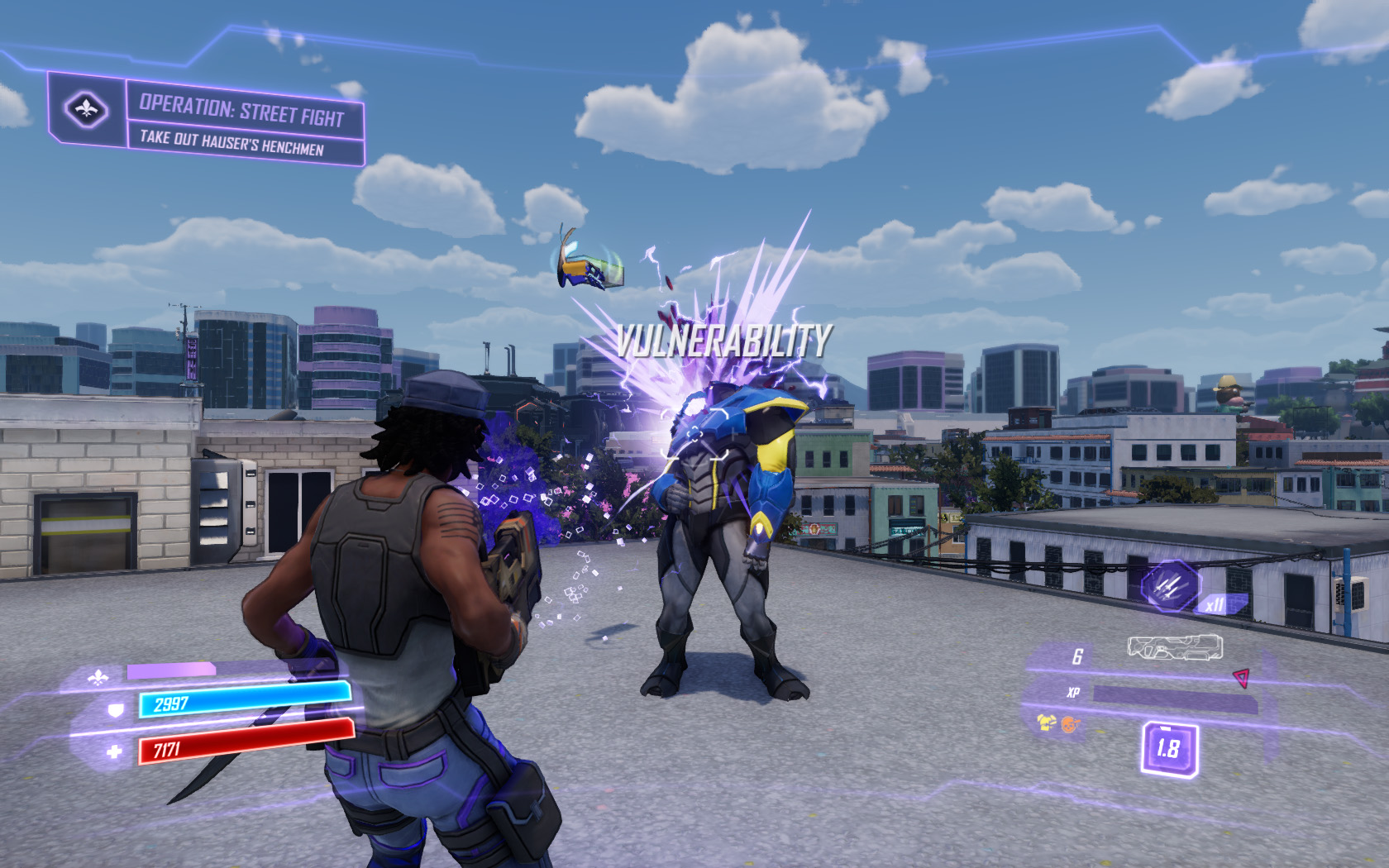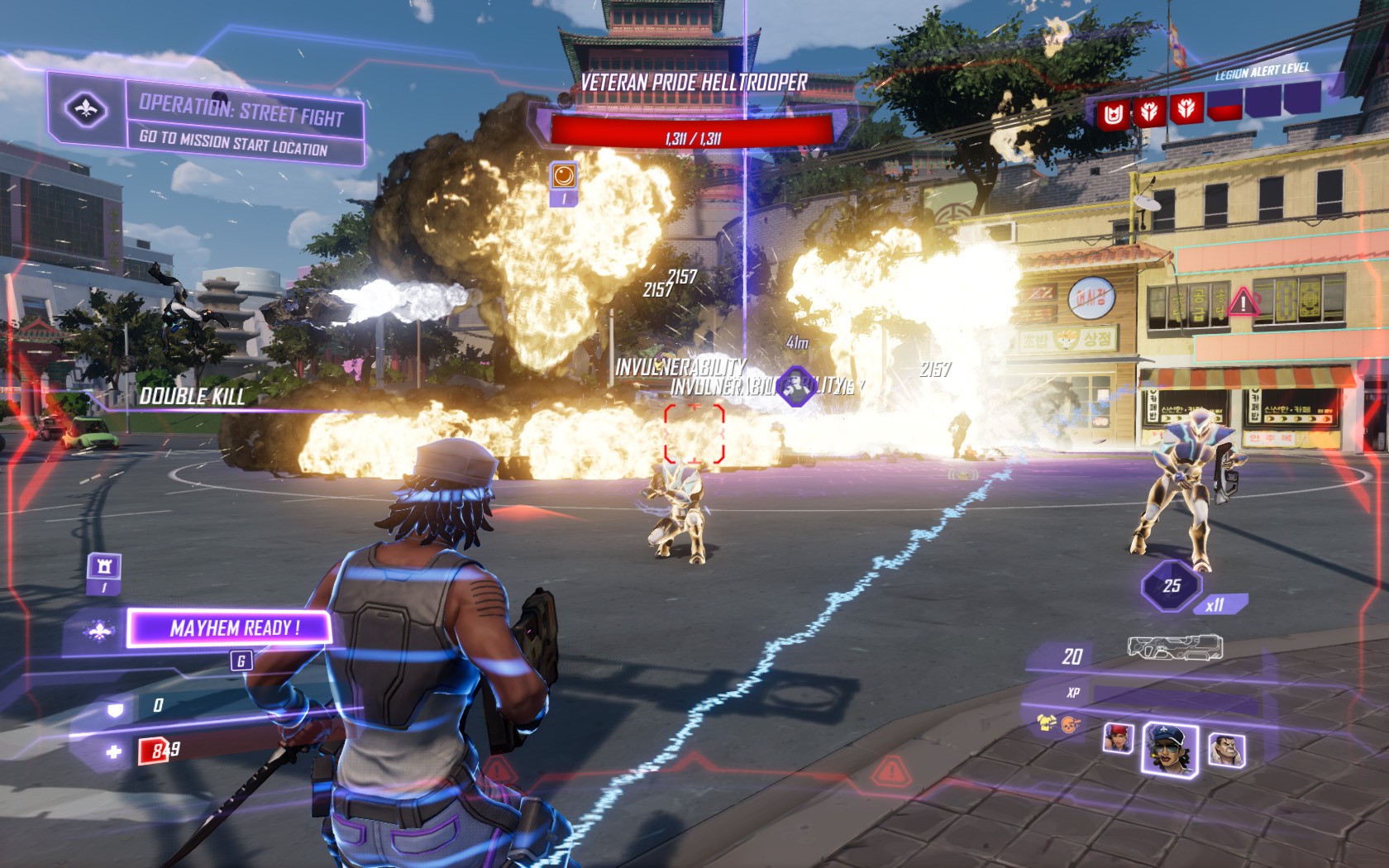Our Verdict
Serves up a generous range of play styles, but it’s hampered by repetitive levels and a few uninspired design choices.
PC Gamer's got your back
Expect to pay $52/£40
Developer Volition
Publisher Deep Silver
Reviewed on Windows 10, GeForce GTX 1070, Intel i7-3770k, 16GB RAM
Multiplayer None
Buy it: Steam, CDKeys
Read our affiliate policy.
While still keeping one purple, stylishly-shod foot firmly planted in the Saints Row universe, Volition’s Agents of Mayhem is a bold attempt to create something a bit different. Whether or not you think it succeeds depends on how deeply you’re willing to immerse yourself in a colourful yet almost sleepy city, taking out waves of enemies with the intelligence of Afghan Hounds in a cartoonish action game where the shooting is serviceable but not outstanding.
The backdrop in AoM is a near-future imagining of Seoul where the game’s principal villain Dr Babylon rules over an organisation called LEGION. His aim? World domination—bwahahaha, and indeed, ha. Working from MAYHEM’s Ark high in the sky, controlled by the all-knowing Persephone Brimstone and her prissy assistant Friday, your job is to stop him.
You’re launched into AoM’s tutorial with Fortune, Hollywood and Hardtack, three of twelve agents you can play as over the course of the game. The remaining nine are unlocked one at a time with each having their own unlock and (later on) back-story missions. The main campaign follows a set pattern with Dr Babylon’s lieutenants being introduced in turn episodically, each character’s story being fleshed out with a handful of bespoke missions. Dr B’s disparate roster of under-bosses include not only misguided brainboxes from the realm of applied science but also a vainglorious Justin Bieber-alike and a bizarre girl group from the saccharine world of K-pop.
The sustained folly of the Saints Row games is not as prevalent in AoM and the humour sometimes seems laboured.
Unfortunately, a few hours into AoM, it hits you that Seoul has a seemingly infinite number of procedurally generated underground lairs and that you will have to spend an awful lot of time in them in order to unlock every agent. But despite having to clear the same lair every time, I was as much consumed by these missions that revealed the personality, weaponry, skills and unique animations of each new agent as I was with the main campaign. Even some of the agents’ back-story missions, brief as they are, eclipse the less interesting boss episodes—these former rotten apples are now working for the good guys.
Squad experimentation is the cornerstone upon which Agents of Mayhem has been built, and while you can eventually choose any three unlocked agents for a mission, you’re never fighting side-by-side with them as you might in, say, Mass Effect. Rather, you morph between the three by using the mouse scroll wheel. This is useful to help an agent recover when they’re low on health or shields. Should an agent die, you can fight on with two or even one but if all three perish, you can restart the mission or go again from the most recent checkpoint.
Ten of Mayhem's agents are equipped with guns, while the spiritual Rama has an energy bow and the ninja Scheherazade wields a katana. I spent most of my time with the latter teamed with Fortune and Braddock. AoM’s guns are balanced so that, for example, Oni’s silenced pistol deals similar damage to Daisy’s minigun, so bigger doesn’t necessarily mean better—you’re best served by deploying a balanced squad with a ranged shooter, an all-rounder and a tank/melee specialist. Skill upgrades, character buffs and gadgets come at you swiftly as you progress while character movement is smooth, each agent having a triple jump ability to help them platform and dodge attacks while in combat.
The sustained folly of the Saints Row games is not as prevalent in AoM and the humour sometimes seems laboured. The exchanges between the squad on the ground and your handlers on the Ark can grate at times, as do the profanities bellowed in-game in the spirit of wacky banter.
Keep up to date with the most important stories and the best deals, as picked by the PC Gamer team.
The Seoul in which you’re battling LEGION is a city of massive modern edifices, expansive open plazas and ancient temples surrounded by vibrant pink cherry blossom trees. With laneways and cut-throughs abound, it’s ideal for massive-scale battles—however, apart from hearing what sounds like the occasional looping of ‘Korean Crowd Panic’ from the BBC sound effects library, it feels populated rather than ‘lived in’. I never really felt the urge to explore unless I was distracted by the glimmer of a nearby loot chest or upgrade crystal.
AoM’s principal appeal lies in the variation its characters bring to the party and while its campaign chugs along amiably enough, there’s also plenty to do in Seoul Saints Row-like outside of the story missions. Its systems are generous and with—I kid you not—fifteen levels of difficulty, it can be as intense an experience as you care to make it. AoM is noisy, brash and, despite some carps, fun, but personally I feel as if I’ve just watched 20 hours straight of Nickelodeon while listening to a random cuss generator. I’m off to lie down in a darkened room for a while.
Serves up a generous range of play styles, but it’s hampered by repetitive levels and a few uninspired design choices.





